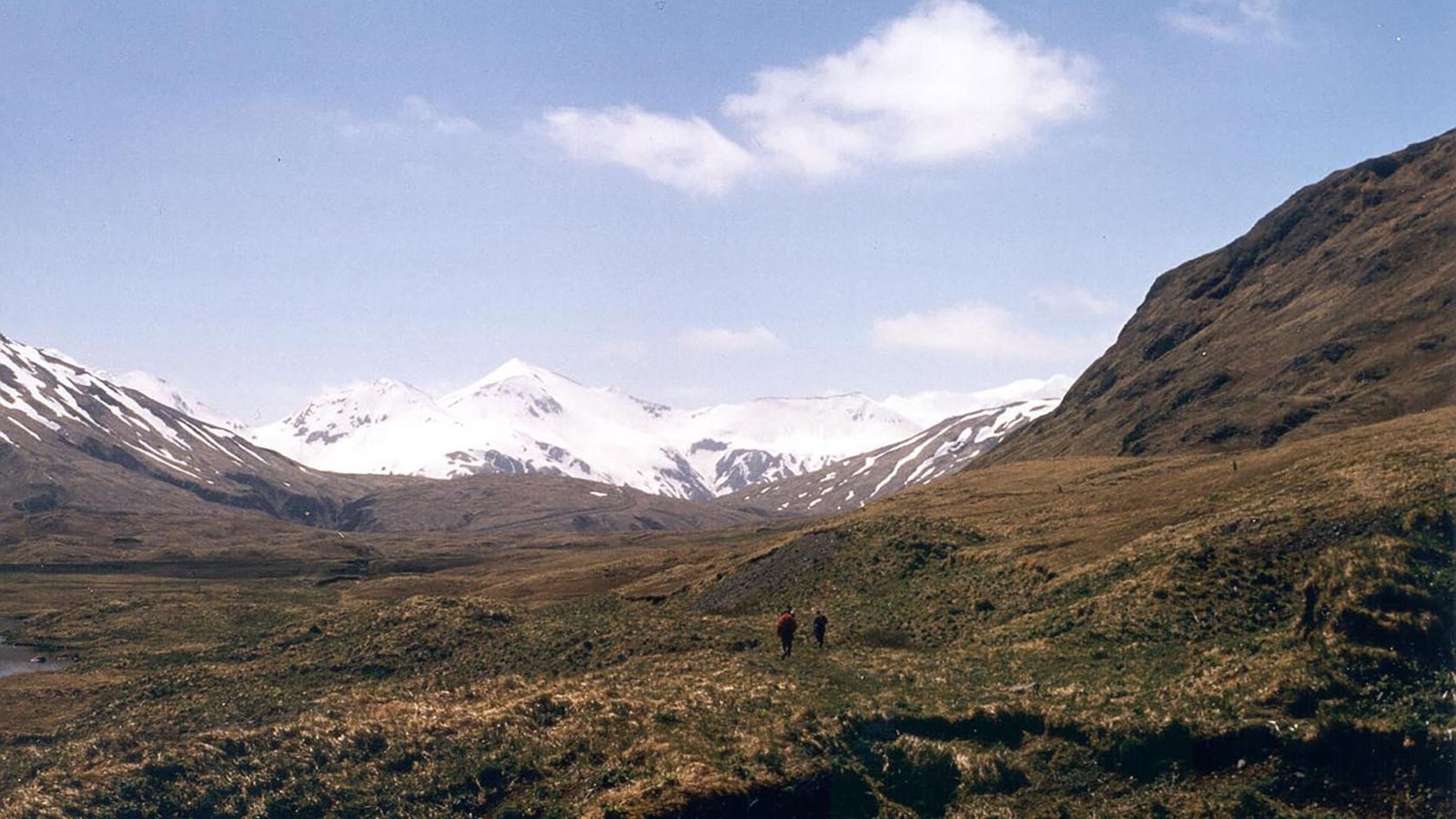Last updated: March 20, 2024
Place
Attu Battlefield and U.S. Army and Navy Airfields National Historic Landmark

NPS Photo
Scenic View/Photo Spot
Japan Takes Attu Island
The Japanese occupation of Attu and the U.S. recapture of the island are significant in the history of World War II in several ways. It is one of eight National Historic Landmarks in Alaska that was designated to commemorate the World War II in Alaska.
Despite significant successes throughout the first half of 1942, the Japanese realized that they could not fight a protracted war against the United States’ industrial might. By destroying the U.S. Pacific Fleet at Midway and establishing bases on Midway and in the Aleutians, along with Fiji, Samoa, and New Caledonia Islands, the Japanese hoped to establish control over the western Pacific. In doing this they hoped to be able to negotiate a peace treaty with the United States. The coordinated attack on the U.S. Pacific Fleet at Midway, along with the Japanese occupation of Attu and Kiska in June 1942 marked the peak of Japan's military expansion in the Pacific. Americans, believing that the occupation of Attu and Kiska Islands was the pretext for an invasion of the United States, were greatly alarmed. For Japan, after suffering a disastrous defeat at Midway, it was the only positive result of their plan.
Recapturing Attu Island
For Americans, the recapture of Attu was an important morale booster because they had little to cheer about at that time. The battle was significant in that it demonstrated the worthiness of the American soldier against his enemy and it illustrated the loyalty of the Japanese soldier to his cause. In terms of numbers engaged, Attu ranks as one of the most costly battles in the Pacific. In terms of Japanese killed, the cost of taking Attu was second only to lwo Jima with only 29 out of 2,250 soldiers surviving the battle. Of nearly 3800 American soldiers, 549 were killed in the battle. Mistakes made and lessons learned in amphibious landings, tactics, and logistical planning made significant contributions to future U.S. Pacific operations. Post-battle bombing raids on Japanese territory from Attu tied up significant numbers of Japanese defense forces and demonstrated that the Home Islands were not safe from air attack and, possibly, invasion from the north.
Attu, Kiska, and much of Adak are part of the Alaska Maritime National Wildlife Refuge, managed by the U.S. Fish and Wildlife Service since 1913.
Learn More About WWII in Alaska
World War II had a major impact on Alaska. At the height of the War more than 100,000 American and Canadian soldiers were stationed in Alaska. Alaska's infrastructure grew immensely as a result. Roads, ports, and airfields were improved or constructed to facilitate the transportation of troops and supplies. An impact that many people are unaware of is the forced evacuation of the Native population of the Aleutian Islands by Japanese and American forces.
Additional Information
- Attu Boy - Six year old, Nick Golodoff, was taken prisoner by Japan
- Lost Villages of the Eastern Aleutians – War time relocation and internment of U.S. civilians
- Interviews and photo collections of veterans of the Aleutian Campaign
- Joseph Sasser's World War II experience, including the Battle of Attu
- WWII in the Aleutians - photos and anecdotes from locals and veterans
- Battle of the Aleutian Islands, History Channel
- More National Historic Landmarks in Alaska
